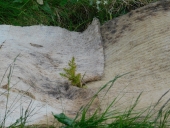
 1
1




 3
3




Mediterranean climate, hugel trenches, fabulous clay soil high in nutrients, self-watering containers with hugel layers, keyhole composting with low hugel raised beds, thick Back to Eden Wood chips mulch (distinguished from Bark chips), using as many native plants as possible....all drought tolerant.
 1
1




 1
1




Mediterranean climate, hugel trenches, fabulous clay soil high in nutrients, self-watering containers with hugel layers, keyhole composting with low hugel raised beds, thick Back to Eden Wood chips mulch (distinguished from Bark chips), using as many native plants as possible....all drought tolerant.
 1
1




 1
1




 4
4




-JMAnder
"An object at rest cannot be stopped!"
 2
2




Be the shenanigans
you want to see in the world.

 1
1




Mike Branscombe wrote:you can insulate anything just by creating an air space. if I had a couple hours to insulate something like a box truck - I would just go buy sheets of plastic and some general adhesive. Just make wall out of the plastic to create a foot air gap on the sides and maybe a 2 or 3 foot air gap on the ceiling.
A piece of land is worth as much as the person farming it.
-Le Livre du Colon, 1902
 2
2




You do not have to be good.You do not have to walk on your knees For a hundred miles through the desert, repenting.You only have to let the soft animal of your body
love what it loves. -Mary Oliver
 1
1




-JMAnder
"An object at rest cannot be stopped!"




 1
1




Idle dreamer




James Bong wrote:Not a tiny house as such, but if one wanted to insulate a cargo van as cheaply and easily as possible/least amount of work, how would you go about it?
...
Cheers for any help.




If I am not for myself, who will be for me?
If I am only for myself, what am I?
If not now, when?












Permies is awesome!!!
 2
2




S Adams

|
What a show! What atmosphere! What fun! What a tiny ad!
Rocket Mass Heater Resources Wiki
https://permies.com/w/rmh-resources
|







